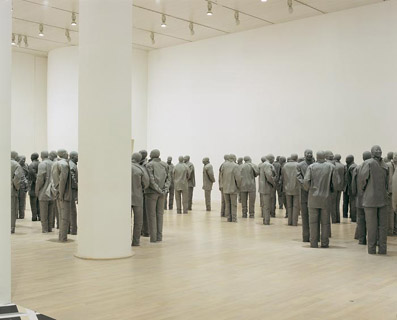The sixteenth-century Spanish mystic, Saint Teresa of
Juan Munoz died unexpectedly of a heart attack in 2001, when he was 48 years old. He had taken an unusually long time to settle on a career as a sculptor, reaching his late twenties before finally deciding that art was his true vocation. During the two decades of his truncated career, Munoz experimented with a number of different styles and techniques. Tate Modern’s exhibition contains sculptures, drawings, paintings, mechanised constructions and a multitude of mannequin-like simulacra of the human figure, sometimes supplied with lips that move or voices that mutter particular phrases over and over again. There are vitrines filled with curios, ranging from switchblade knives to resin casts of tins and tubes of cosmetics, as well as miniaturised figures of men in pairs treating a woman – always the same, victim-like woman – as though she were their toy or puppet. There are also a number of highly theatrical installations, sparse stage-sets with sinister overtones that look well adapted for the existential plays of an author such as Samuel Beckett.
Despite the stylistic variety of Munoz’s work,...


